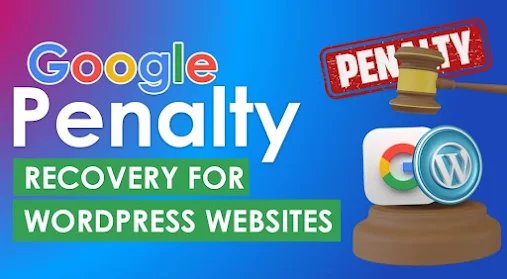Recovering from a Google penalty can be a challenging process, but with a strategic approach, it’s possible to restore your website’s visibility and rankings. Here’s a step-by-step guide on how to recover from a Google penalty:
### 1. **Identify the Type of Penalty**
- **Manual Penalty:** Check Google Search Console for any manual action notifications. If your site has been manually penalized, Google will provide details about the reason for the penalty and which pages are affected.
- **Algorithmic Penalty:** If your rankings dropped without any manual notification, it may be due to an algorithm update (like Panda or Penguin). Research recent Google updates to determine if any align with your drop in rankings.
### 2. **Analyze the Issue**
- **Review Google’s Guidelines:** Familiarize yourself with Google’s Webmaster Guidelines to understand what might have triggered the penalty.
- **Conduct a Site Audit:** Perform a thorough audit of your site to identify potential issues, such as:
- **Low-Quality Content:** Look for thin, duplicate, or low-quality content that may not provide value to users.
- **Backlink Profile Issues:** Analyze your backlink profile to identify toxic or spammy links that could be causing a penalty.
### 3. **Address the Problems**
- **Content Quality:**
- **Improve Content:** Revise low-quality content, remove duplicate content, and enhance existing pages to provide more value and relevance.
- **Add Unique Content:** Create high-quality, original content that meets user intent and provides a better experience.
- **Backlink Cleanup:**
- **Disavow Toxic Links:** Use tools like Google’s Disavow Links Tool to disavow low-quality or spammy backlinks that could harm your site’s authority.
- **Remove Bad Links:** Reach out to webmasters of sites linking to you with requests for link removal, if applicable.
### 4. **Implement Changes and Monitor**
- **Technical SEO:** Ensure your website is technically sound. Check for issues such as slow loading times, mobile-friendliness, broken links, and proper indexing.
- **Monitor Performance:** After implementing changes, use Google Search Console and analytics tools to monitor traffic, rankings, and indexing status. Keep an eye on any notifications in Search Console.
### 5. **Request Reconsideration (for Manual Penalties)**
- **Create a Reconsideration Request:** If you’ve addressed the issues causing the manual penalty, submit a reconsideration request through Google Search Console. Be honest and provide details on the actions you’ve taken to rectify the situation.
- **Document Your Efforts:** Include a comprehensive overview of the changes made, including improved content, link removals, and any other corrective actions taken.
### 6. **Be Patient and Persistent**
- **Allow Time for Changes:** Recovery from a penalty can take time, especially if it involves significant content changes or backlink cleanups. Monitor your progress regularly and continue improving your site’s quality.
- **Stay Informed:** Keep up with SEO trends and Google updates to adapt your strategy and avoid future penalties.
### 7. **Avoid Future Penalties**
- **Adhere to Best Practices:** Regularly review Google’s guidelines and ensure your website complies with best SEO practices.
- **Regular Audits:** Conduct periodic SEO audits to identify and address potential issues before they lead to penalties.
- **Focus on Quality:** Prioritize high-quality content creation, user experience, and ethical link-building strategies.
### Conclusion
Recovering from a Google penalty requires careful analysis, targeted action, and ongoing monitoring. By identifying the cause of the penalty, addressing the underlying issues, and maintaining adherence to Google’s guidelines, you can work toward restoring your site’s visibility and rankings. Patience and persistence are key, as recovery may take time, but with consistent effort, you can successfully bounce back.











0 Comments